Twiggy Heath Myrtle and Australian Native Tea Tree
The Twiggy Heath Myrtle used to be the Baeckea ( Botanical name ) , but now Scientists can't seem to decide whether it's the Baeckea, Babbingtonia, or Sannantha .....it's an identity crisis !! Either way, we are talking about the same plant. The Baeckea is also very closely realated to the Leptospermum ( Australian Native Tea Trees), which has flowers that look very similar.
Baeckea plants are a small to medium shrub growing to around 2 metres in height. Most species are native to Australia, and have flowers in different colours, they are small and have 5 round petals, and can be white, cream, purple or shades of pink, depending on the species. Leptospermum are variable in height, depending on variety- from small shrubs to larger shrubs and small trees. During Spring and Summer, the plants are covered in masses of flowers which are spectacular, and they look like they're covered in snow. The flowers produce lots nectar, so the bees and wildlife have a great time around the bushes and they are also used for honey production.
Baeckea and Leptospermum are fast-growing plants, and for best results, plant them in the full sun and a light pruning after the main flowering to keep the plants compact. The best climate is cool temperate to warm, but it will tolerate some mild frosts. The plant pictured is a Leptospermum , which is growing in a Sydney Garden.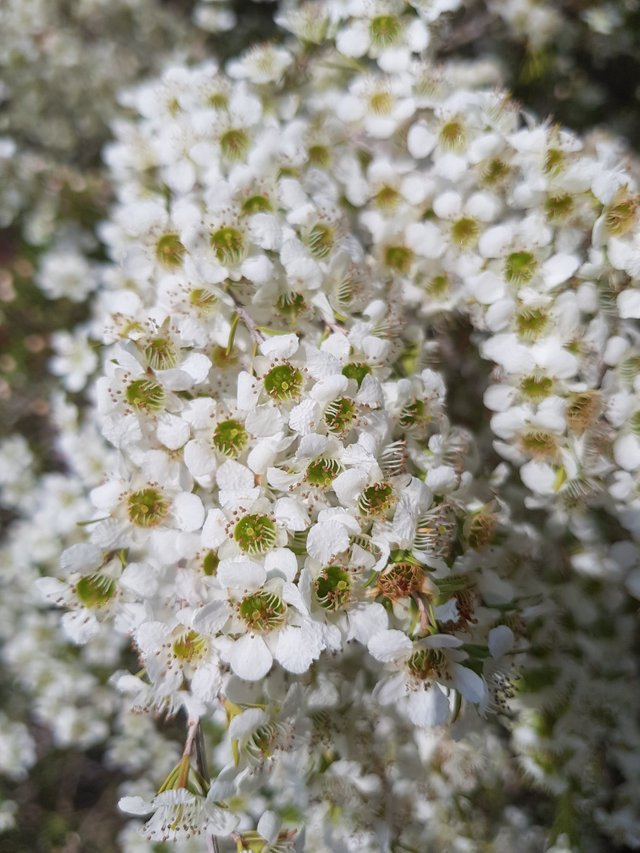
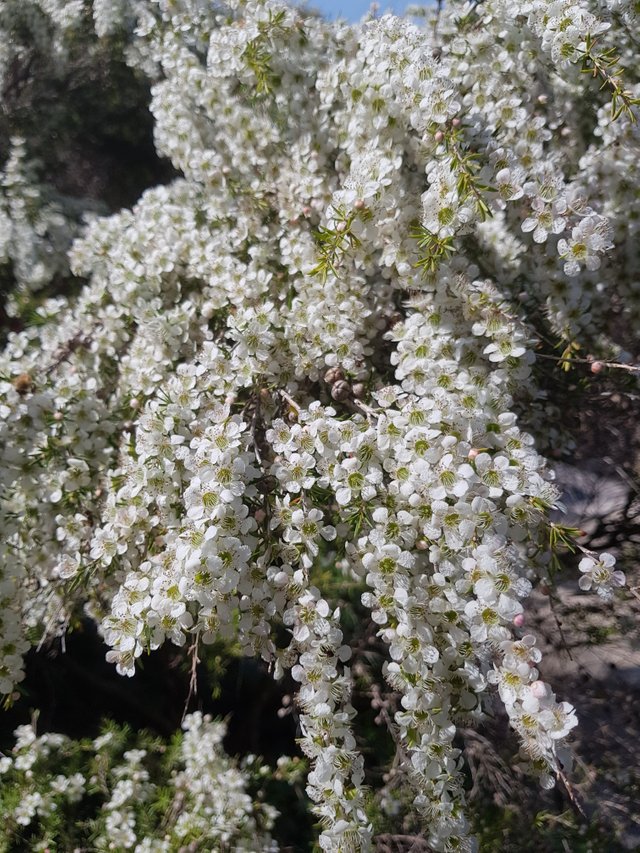
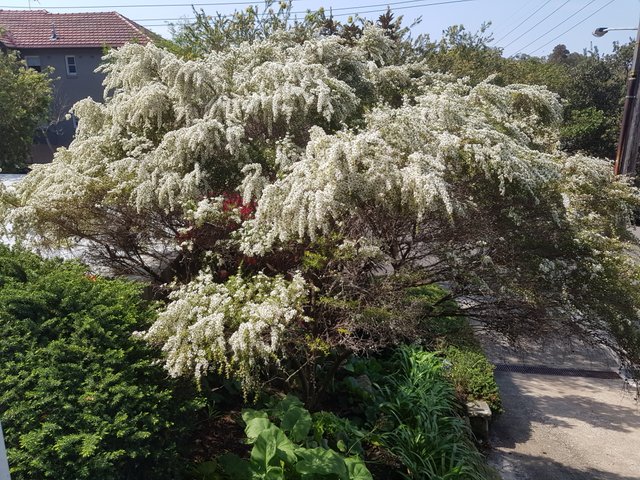
Leptospermum or myrtle New Zealand is an ornamental shrub with green foliage and the Myrtaceae family. Native to Oceania, trees sometimes develop in heights in rocky areas, or in deserts.
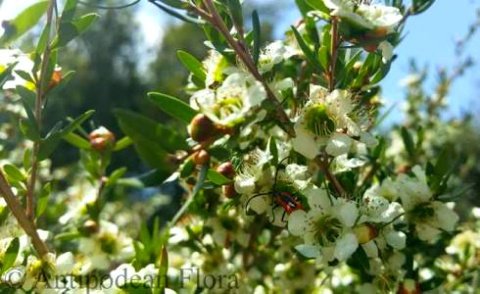
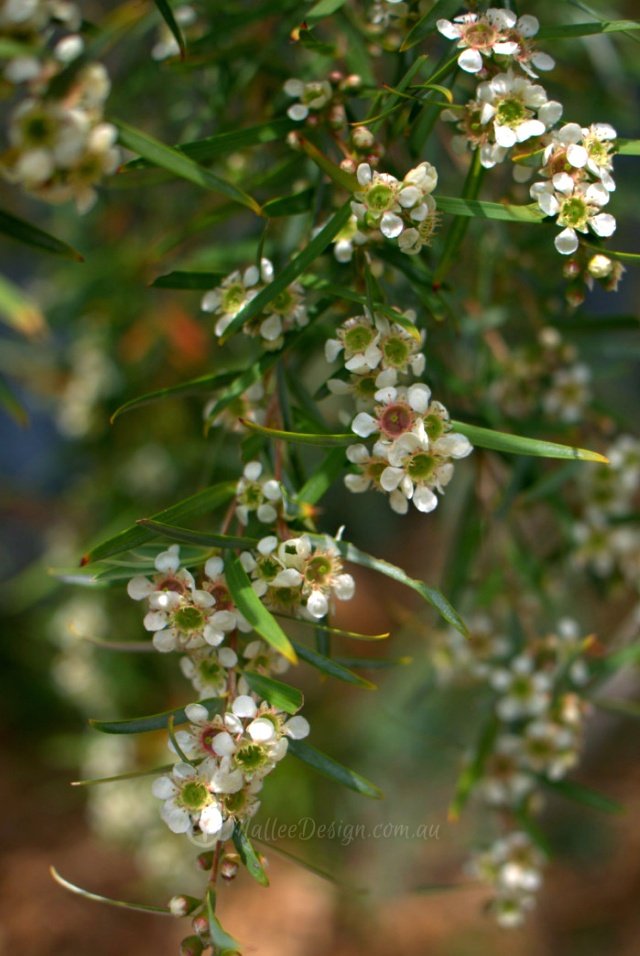
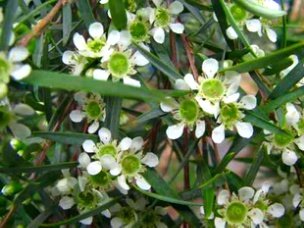
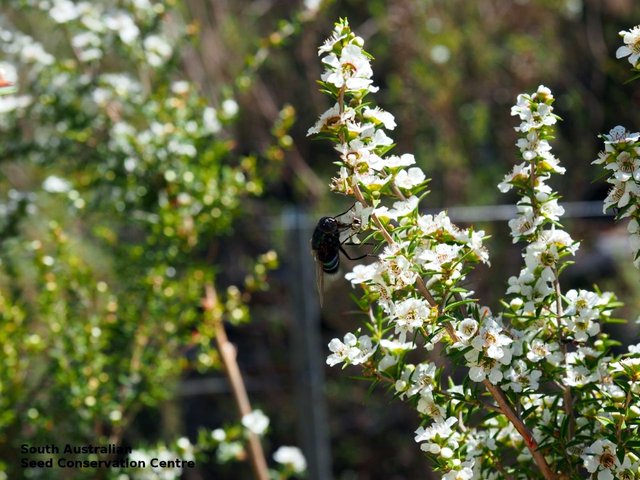
This dry resistant bush is planted in open soil in the sea area or in pots for cooler areas.
Leptospermum is a bush that rarely exceeds 3 m in height. It contains many small, elongated and coarse green leaves, even slightly stinging. Aromatic leaves. Welded flowers are formed from 5 round petals.
Love honey flowers and bushes have an interest in feeding bees early in the season.
Leptospermum can be cut lightly after the end of flowering to rebalance its growth.
Another color from the Leptospermum scoparium:
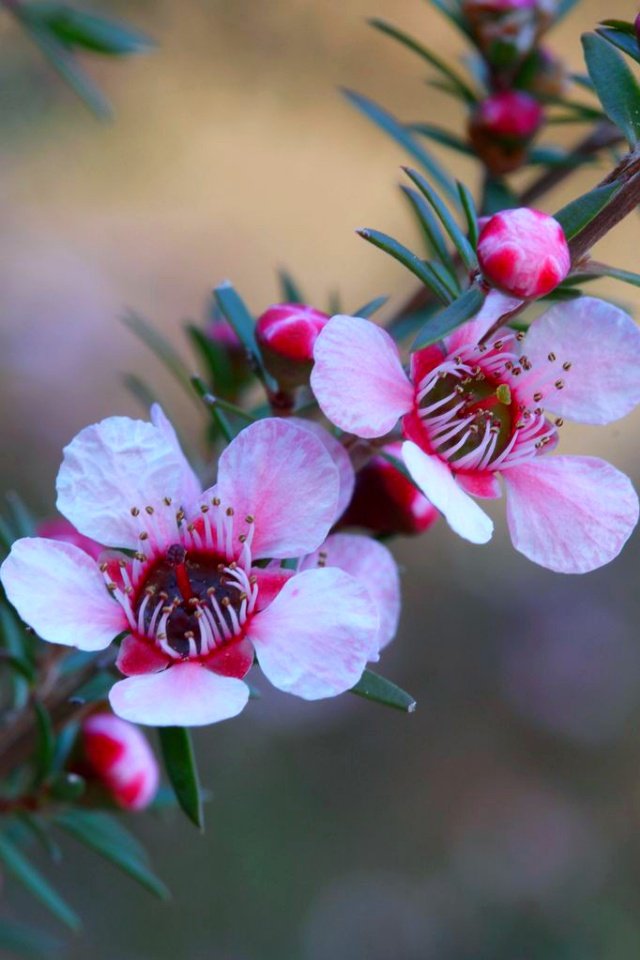
Reference:
Source
Source
Fav. comment Award ! Really nice Pics, thanks.
Seed germination is also possible. The fruit of Baeckea species is a woody capsule, which is dehiscent at maturing. This makes seed collection difficult from plants in natural populations as the seed is small, and once released it is inconspicuous on the ground. Seed can be obtained by bagging green fruit and collecting the seed soon after it is shed. Alternatively, green fruit nearing maturity can be placed in open paper bags to collect the seeds as the fruit matures, or the seed can be dissected from the fruit.
The seed should be surface sown in spring or autumn in a greenhouse and keep the compost moist until germination takes place. When they are large enough to handle, prick the seedlings out into individual pots and grow them on in the greenhouse for at least their first winter. Plant them out into their permanent positions in late spring or early summer, after the last expected frosts.
https://www.anbg.gov.au/gnp/interns-2003/baeckia-gunniana.html
Fav. comment Award ! Thanks for the great Pics .
A beautiful shrub literally consists of the same flowers. A small growing tea tree, Leptospermum flavescens "Cardwell" is great for plants in the garden, and can also be used with a low level of extraction or sorting.
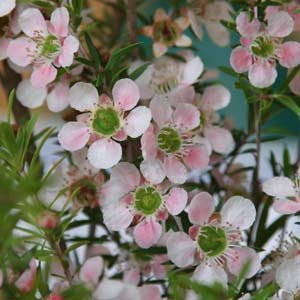
This is a very attractive shrub, leptosperm with masses of pink or white flowers from winter to spring. The stems have a natural bulging or weeping habit, and, given the small room, it looks very elegant, like a separate tree of characters. Flowers form right along the arch, which adds to the general appearance.
Very hardy and tolerant to a variety of conditions, it is a low-speed installation, well suited for use in various areas of landscape design. Suitable for mass plantings in landscaping projects. This form of "Cardwell", which has the best weeping habit and, therefore, the most popular.
https://www.acsgarden.com/plantdir.aspx?id=172
Silly Sausage Award ! Well done for selecting nice Pics.
Shared on twitter promoting good quality content on #Steemit.
Thanks once again for sharing some great photos and bringing great content to the #Steem Blockchain.
Have a great day.
Stephen
#Promo-Steem #steemtalent #JoinSteemit #Steemit
https://twitter.com/StephenPKendal/status/1059430077795065856
Beckey shrub (Baeckea ) - a plant belonging to the myrtle family, a shrub in height from 1 m, strongly branched from the base. The flowers are small, white, solitary, axillary; buds obratkonicheskie. The leaves are small, opposite, falling. It blooms in April - July. Leaf plates with glands. The fruit is a small box that opens transversely. The plant has a strong pleasant smell. Seeds are small, angular. A boring description of a plant has been obtained. But how beautiful it is :)
http://www.sierraflowerfinder.com/en/d/leptospermum-red/2470
Amazing plant @ctrl-alt-nwo!
George Bentham in 1867 established a broad concept for the genus Baeckea but in recent years studies have shown that, because of differences in the group, many Baeckea species should be placed into other genera, including Ochrosperma, Triplarina, Babingtonia, Euryomyrtus, Kardomia, and Sannantha. Baeckea linifolia is one of a number of species that remained within Baeckea.
B.linifolia is a weeping shrub 1.5 to 2 metres high, usually of "tree" shape with a bare trunk. Leaves are linear and between 6 to 18 mm long and 0.5-1 mm wide. The small tea tree-like flowers are about 5 mm in diameter, white in colour and occur in a massed disply along the weeping branches. Flowering occurs in summer.
This species is reasonably well known in cultivation. It is a very hardy plant in most reasonably drained soils, preferably in full sun of dappled shade. It is tolerant of at least moderate frost and withstands extended dry conditions well, once established.
Seed germinates well without pretreatment but is difficult to collect as it is released from the small seed capsules when ripe. Cuttings of firm, current season's growth strike readily.
A source: http://anpsa.org.au/b-lin.html
Baeckea virgata nana is commonly known as Miniature Baeckea. A small and compact Australian native shrub with deep green linear leaves and clusters of delicate white flowers that bloom abundantly throughout summer.
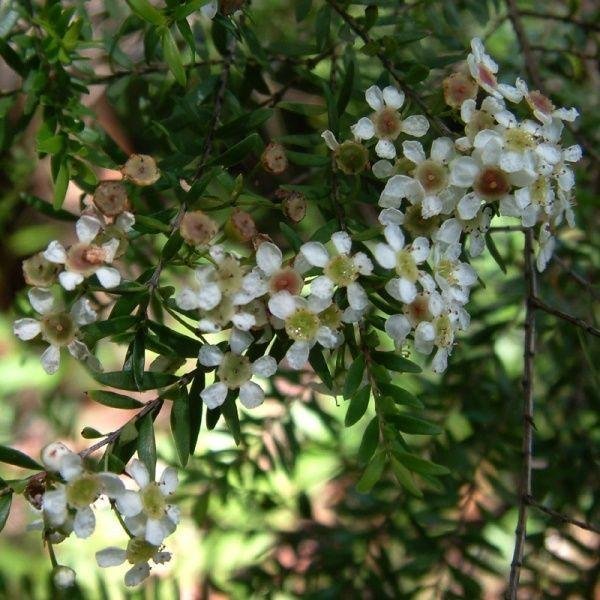
Source
Source
This tough plant is an excellent choice for shrubberies, rockeries, containers and low hedges; providing a suitable habitat for small native birds such as wrens and finches. For optimum results, position is a sunny to partly shaded position, tolerates most soil types as well as periods of drought and frost. Prune well after flowering to maintain a compact shape and promote fresh new growth. Baeckea virgata nana will grow to a height of 50cm and a width of 50cm.
Source
Oh! Tea tree! I love to grow several Tea Tree in my garden! But we can’t find this plant here. I use Tea Tree oil too. Their flowers are very beautiful and delicate. I guess I cannot eat these flowers. Haha!
Posted using Partiko iOS
It is a useful size for small gardens, remaining at a 2 m tree-like shape and only bushy at the base if trimmed for that purpose. This is a shrub not for distant viewing or bold effect but for near planting where the tiny white flowers can be seen, or a leaf bruised now and then for its spicy perfume.
At the Australian National Botanic Gardens examples can be seen in built-up soil mulched with bark chips, and shaded by tall trees. They survived drought years, though growth was sparse and dull, and recovered when regular watering became possible. Light shade is a definite advantage, protecting the top growth from drying out; no winter protection is needed.
Tip growth on the weeping branches is very free, with narrow, even leaves about 2 cm long. They are smooth and waxy, showing numerous transparent dots (oil glands) when magnified. The foliage of a healthy watered shrub shines, turning purple in winter, an advantage of the cold Canberra climate noted on many species in these Gardens.
The tiny, pure white flowers are a perfect shape, with five petals, and resemble Leptospermum (Tea Trees) to which the genus Baeckea is related. All face upwards on the stems and for their size are quite showy, especially on the purplish background, as one of the best flowering times is June to July. A flush of flowers can occur at any time from early February; in fact they are completely absent only during a short rest from late spring onwards.
The seed capsules are like tiny bells on short stalks and they also turn red in ripening, making this a shrub of changing tints. Capsules brought indoors release numerous fine seeds and these or summer cuttings are used in propagation.
Source: https://www.anbg.gov.au/gnp/gnp3/baeckea-linifolia.html
So beautiful they look in collective trees lined up glorious thanks for sharing that :)